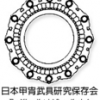Translation of the printed text:
This is a head-shaped helmet with a dark blue thread dignity and a large nail headstall. This helmet has a large nailhead stand, which is one of the designs seen in the kobo of the Sengoku-Momoyama period, but most of them are made of wood. The breast plate of the body is decorated with a dragon in gold lacquer. As the headstand is eye-catching, the body is only decorated with gold maki-e on the breastplate, so that the overall impression is well balanced. Hori Hidemasa was a close associate of Nobunaga, and later served under Hideyoshi, and was loved for his talent, but died at a young age during the Odawara War. He was known for his skill in battle and was called "Kyutaro the master".




